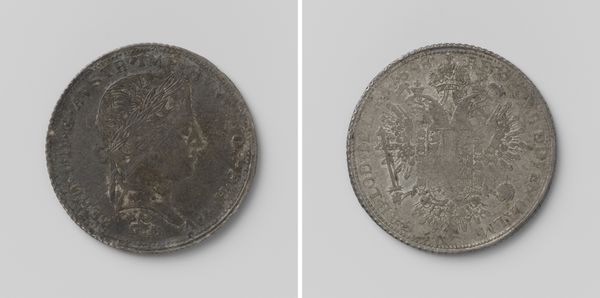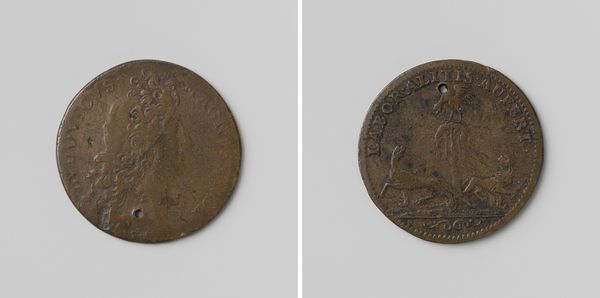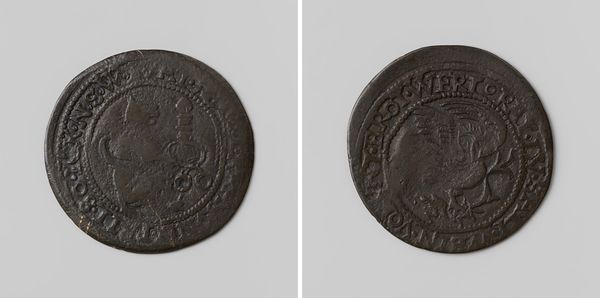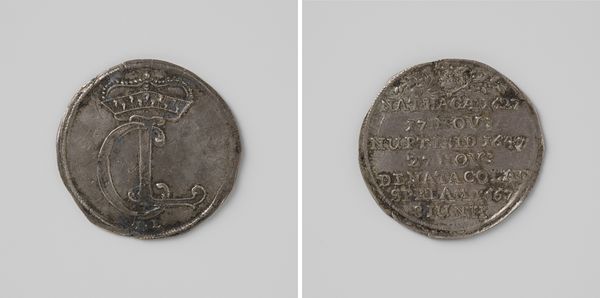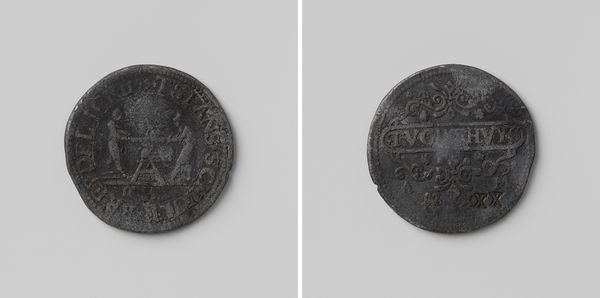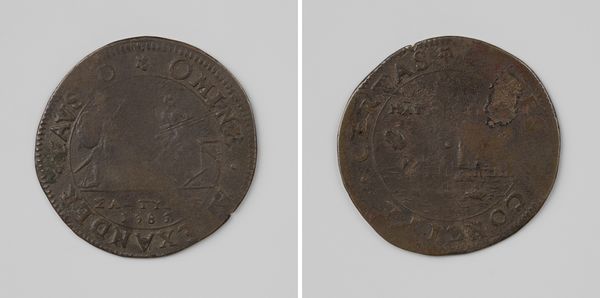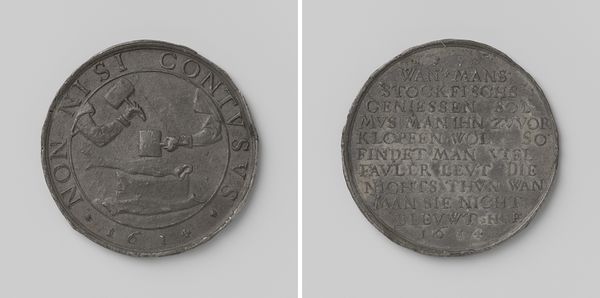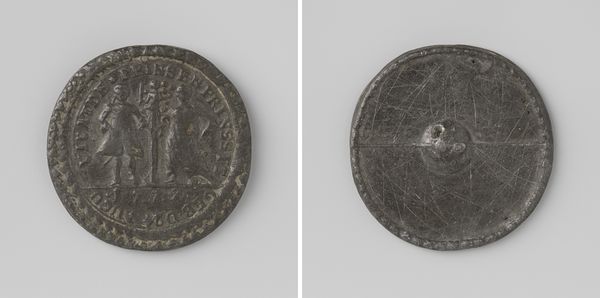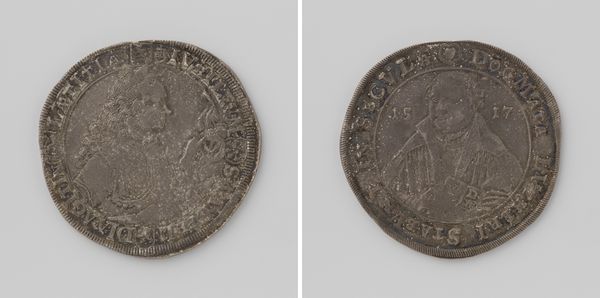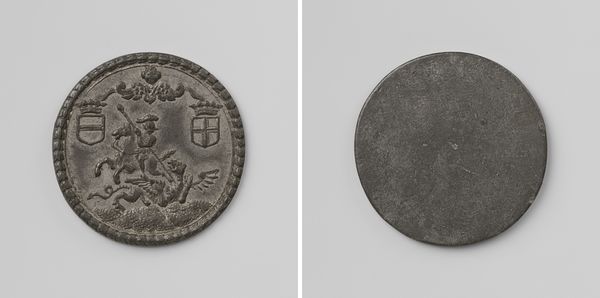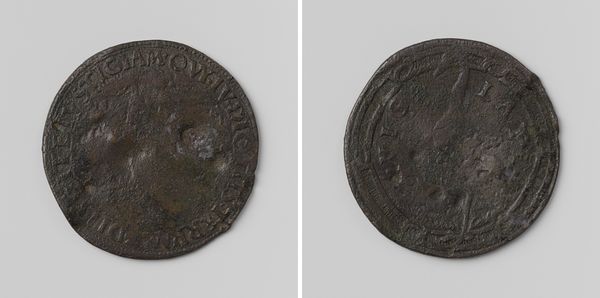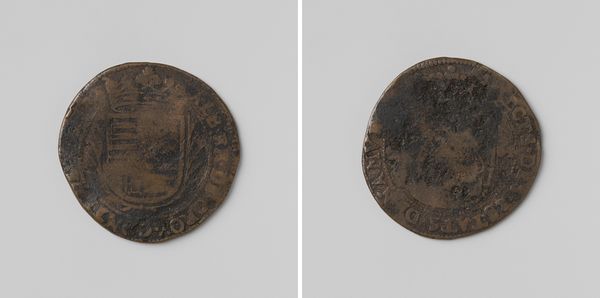
Opening van het Noordzeekanaal, ter ere van Willem III, koning der Nederlanden, penning geslagen op last van de Amsterdamsche Kanaal Maatschappij 1876
0:00
0:00
metal, bronze, sculpture
#
metal
#
sculpture
#
bronze
#
sculpture
#
history-painting
#
academic-art
Dimensions: diameter 5 cm, weight 52.22 gr
Copyright: Rijks Museum: Open Domain
Curator: This bronze medal, created by Edouard Louis Geerts in 1876, commemorates the opening of the North Sea Canal and honors King Willem III. It was commissioned by the Amsterdam Canal Company. Editor: It looks incredibly aged, almost worn down. The image on the front is quite strong, a profile, but the back is quite obscure. A feeling of power but almost lost power too, from looking at its weathered condition. Curator: Medals like this one were not just commemorative objects; they were also carefully constructed tools of public memory and national identity. Circulating such imagery reinforced the legitimacy of the monarchy and celebrated national engineering achievements. It presented the Canal project as a sign of Dutch progress. Editor: Indeed. The act of literally shaping metal into an idealized version of leadership... it carries a specific message of order and control. It makes you wonder about those who didn't benefit from that progress, those displaced or whose labor contributed to the Canal's creation without acknowledgment. Curator: Precisely. The creation and distribution of such medals reflect the power dynamics of the period and the active role of institutions like the Amsterdam Canal Company in shaping public perception. It omits the realities of industrialization's impact on ordinary lives. Editor: Right, like whose story truly gets amplified? Whose narrative of triumph gets stamped in bronze while the stories of others are erased or tarnished over time, much like the details on the reverse side of the medal we're looking at? Curator: These objects serve as powerful reminders to critically assess whose voices are privileged and whose are marginalized within the grand narratives we inherit. By studying them we begin to realize that things were more difficult for many people. Editor: And also consider that these types of mementos and artworks can prompt discussions and analyses from multiple perspectives when it comes to race, gender, labor and power. Hopefully leading us all to a better understanding of our own place within these grand historical currents.
Comments
No comments
Be the first to comment and join the conversation on the ultimate creative platform.
